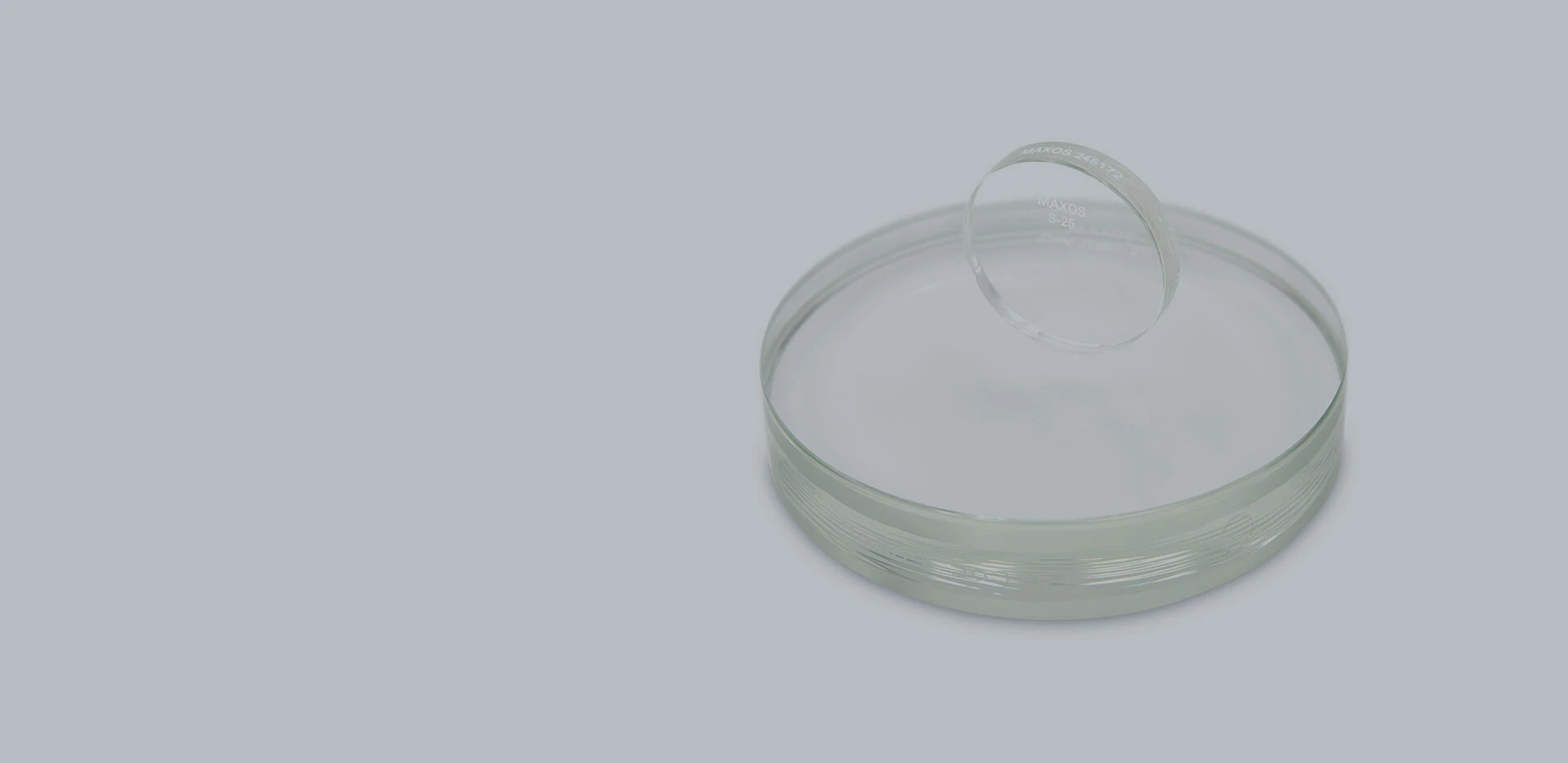
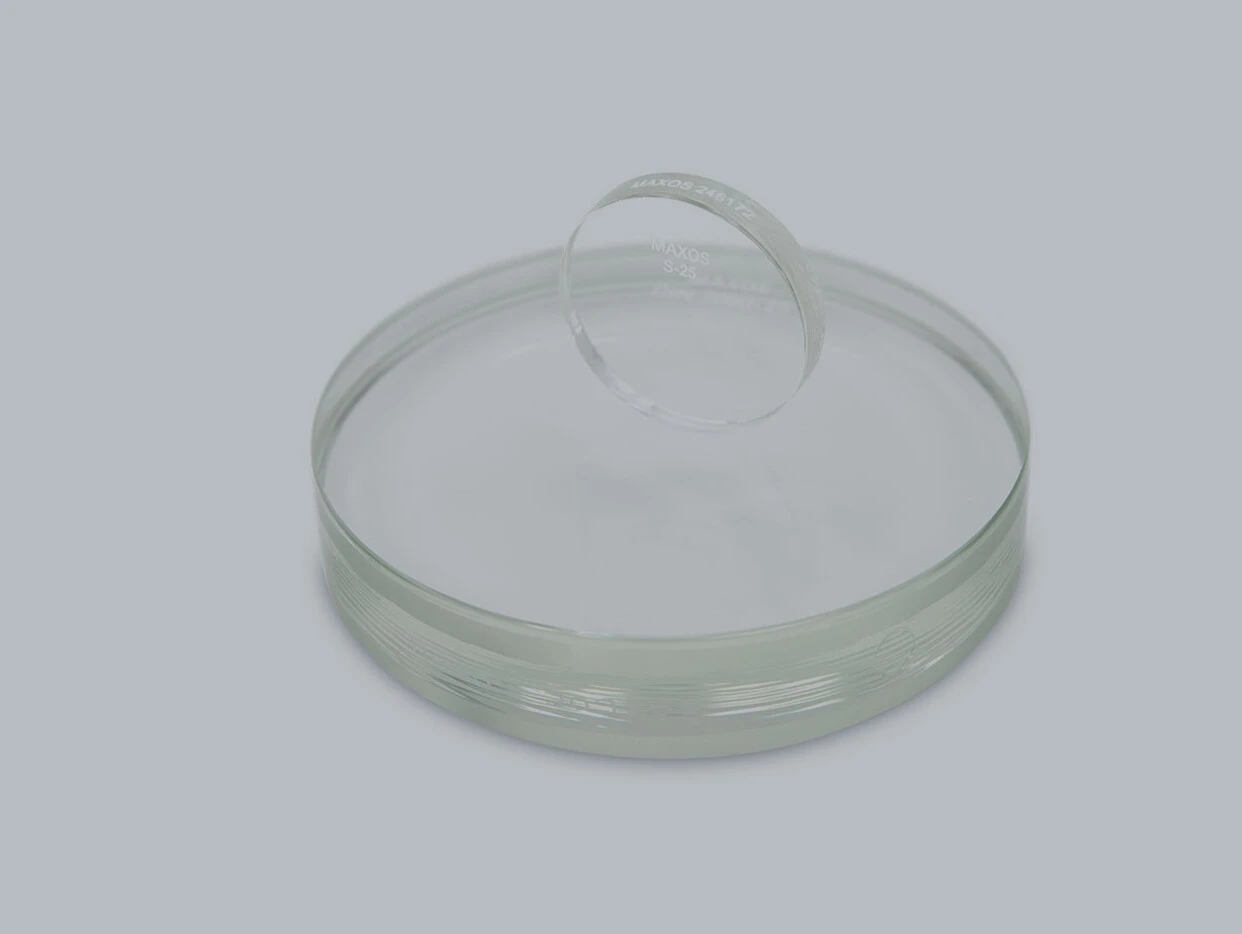
What is thermal tempering of glass?
Technical glasses such as Borosilicate glass, Soda-lime glass, Quartz glass, and Sapphire glass play a crucial role in optical process observation and many other applications. Our many years of expertise in the field of technical glasses enable us to provide precise solutions for the most demanding requirements.
This report explains the methodology of thermal tempering of glass, the underlying physical principles, and the benefits that can be achieved through this process.
The thermal tempering is a process in which glass is heated to a temperature above the transformation temperature and then quickly cooled. The transformation temperature marks the transition of the glass from a plastic to a solid state. Typically, the glass is heated in the tempering furnace to temperatures between 620 °C and 670 °C before being rapidly cooled by targeted air blowing.
Procedure for thermal tempering:
The glass is heated to a defined temperature that is approximately 100 °C above the transformation temperature.
The glass surface cools down faster than the glass inner core.
The temperature difference leads to tensile stresses on the glass surface and compressive stresses in the core.
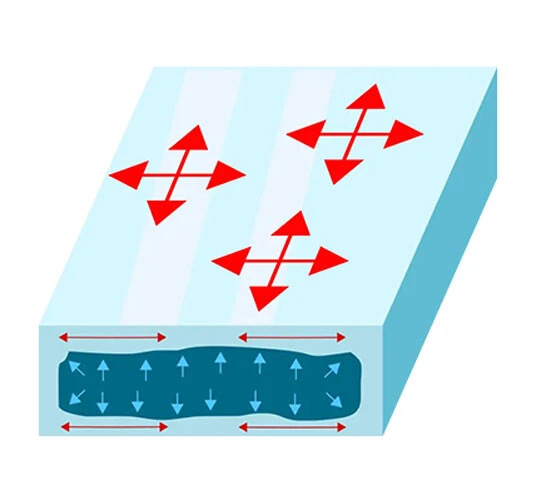
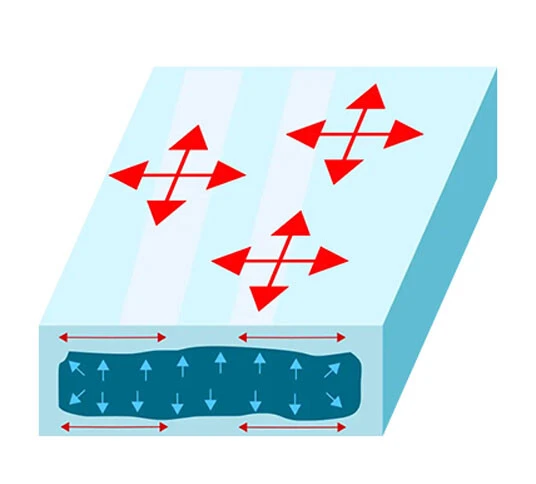
Stress Behavior in Glass
During cooling, different stress zones arise:
- Surface tensile stresses: These stresses result from the rapid shrinkage of the glass surface.
- Core compressive stresses: The inner core of the glass, which cools more slowly, compensates for these tensile stresses by building up compressive stresses.
The precise control of the output temperature and the cooling rate is crucial. A too low initial temperature or insufficient cooling can lead to stresses that trigger glass breakage. Our deep understanding of these mechanisms allows us to develop the optimal process parameters to produce glass products of the highest quality.
Advantages of thermally tempered glass
Thermally tempered glass offers numerous advantages that make it particularly suitable for safety-critical and load-intensive applications:
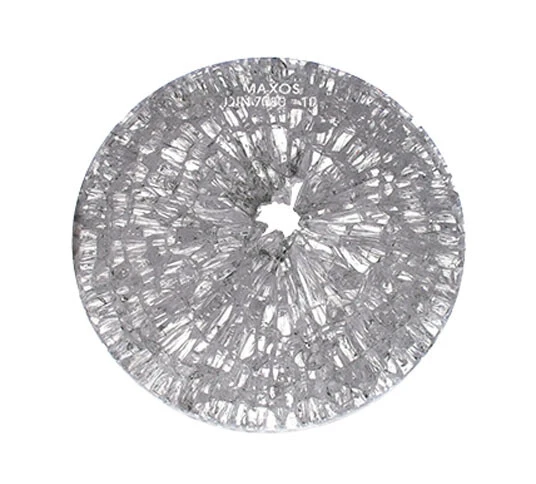
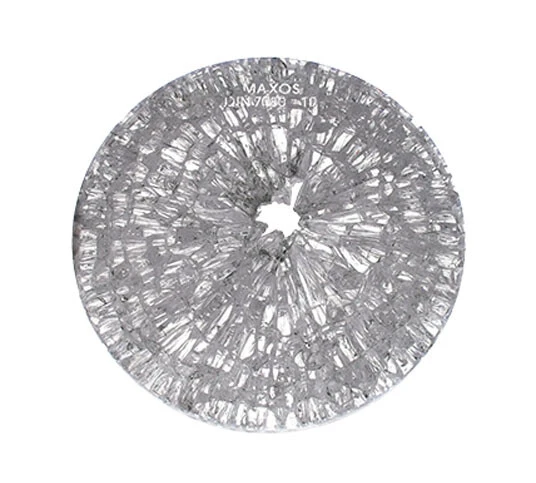
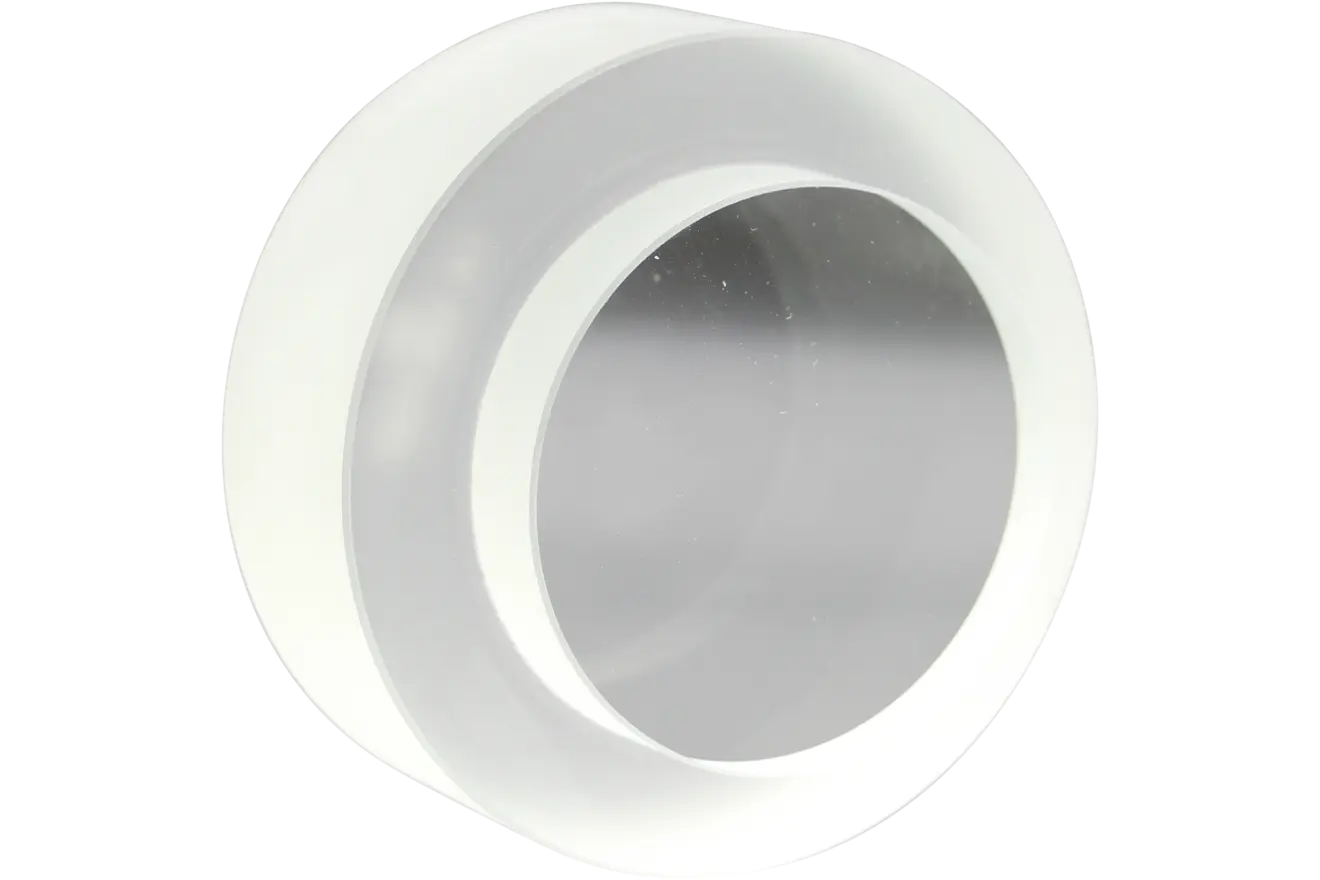
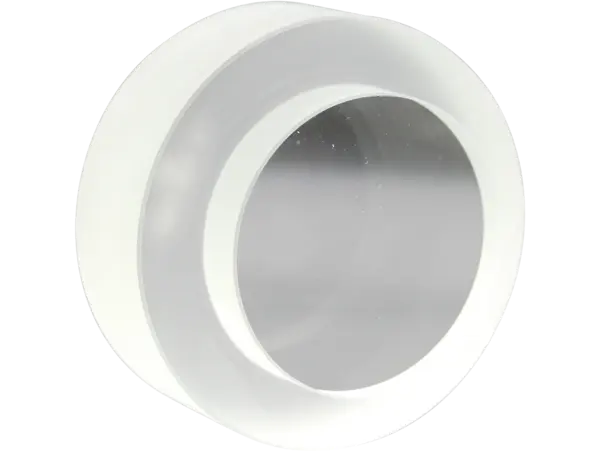
The specific residual stresses give the glass increased mechanical strength. It is more resistant to impact, pressure, and bending loads compared to conventional float glass.
In the event of glass breakage, thermally tempered glass shatters into small, blunt-edged pieces that significantly minimize the risk of injury. This is a crucial safety aspect in areas such as chemical processes, plant construction, or architectural applications.
The tempering process increases the surface hardness, making the glass more resistant to scratches and abrasion – a significant advantage for use in demanding environments.
Tempered glass offers improved resistance to temperature fluctuations, making it ideal for applications with extreme temperature cycles.
Conclusion
Through our specialized experience with technical glass, we offer our customers innovative solutions for safety and performance-related applications. Our profound technical expertise ensures that every product meets the highest quality standards.
With our advanced process control and comprehensive material knowledge, we are your reliable partner for high-quality glass solutions.
Applications
Our expertise in thermal tempering extends across a variety of industries:
- Chemical process observation: Use of sight glasses that must withstand extreme conditions.
- Architecture: Safety glass for facades and partitions.
- Medical technology: Robust glass solutions for high-precision optical devices.
- Aerospace: Glass with high mechanical load capacity and temperature stability.
A project in mind?
We can help you!
Please feel free to contact us and we will discuss together how we can assist you!